![]()
During the autumn of 1950, residents within the sleepy village of Ewood Bridge were shocked to have learnt of the brutal murder of a young Yugoslavian man, whose body had been discovered within a platelayers cabin that was situated just a few yards away from the East Lancashire Railway line.
On the 9th of October, a man by the name of Alvar Howarth was making his usual trek to the cabin, which was someway off the beaten track, ready to begin his shift as a platelayer, or in simple terms, an employee who inspects and maintains railway lines. Having to walk along within inches of the East Lancashire Railway line, he would soon arrive at his place of work.
The cabin was nothing more than a small wooden hut, and was situated just off an embankment that was only several feet from the main railway line.
On entering, he instantly noticed the body of a man lying face down on the cold floor, with his head facing towards a fire place.
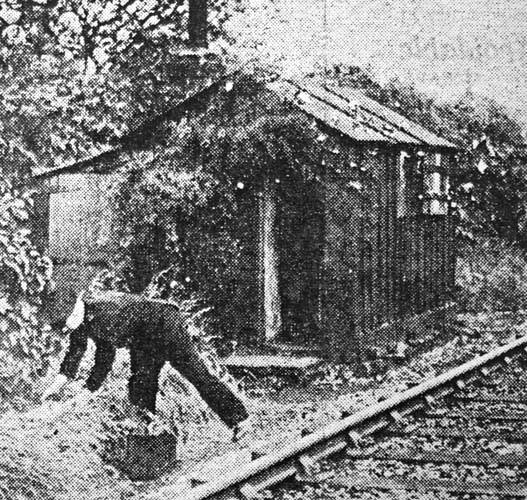
Quickly realising the situation maybe a serious one, Howarth fled from the cabin to summon for help and as his boss, William Crook was living close by, he soon made his way to his house. Crook, after hearing of a body laying on the floor within the cabin, contacted the police station in Ramsbottom, and it was P. C. James Matlow who called for an ambulance.
Upon being informed of the events taking place over at Ewood Bridge, Chief Superintendent Lindsay, together with Dr. J. B. Firth – head of the Forensic Science Laboratory at Preston, and Dr. G. B. Manning, Home Office pathologist, soon made their way to the lonely spot and in no time had sealed the entire area off whilst they began their investigations.
News quickly spread, and it didn’t take long for the local press to arrive, all eager to find out more about the identity of the body of the man, and the circumstances that may have led to him being left on the floor.
Superintendent Lindsay would tell the waiting press; “We are making an extensive search to discover the man’s identity. His injuries suggest that he was the victim of foul play.”
The body would later be transferred to Bury Infirmary with a post-mortem examination to take place later that afternoon.
Throughout the day, an investigation tried to identify who the body was, and by midnight, the police would finally be able to confirm that it was of a Yugoslav refugee named Radomir Djorovic.
A single man, who was just 26 years old, Radomir had arrived in Britain in January 1948 and was employed at the Sun Paper Mill at Feniscowles, near Blackburn.
It appears that initial investigations into his whereabouts prior to his death would establish that he had spent the previous afternoon in the company of another man called Nenad Kovacevic, at nearby Edenfield, where they had Sunday lunch with other Yugoslavian refugees.
Detective Chief Superintendent Lindsay, speaking to the press said; “We are anxious to interview a man named Nenad Kovacevic, a 29 year-old Yugoslav, who came to England in December, 1947.”
Interestingly, it would later emerge that Kovacevic had also worked at the same paper mill as Radomir, and he had been employed as a labourer from July 24th to September 29th, 1950.
A description of Kovacevic was released and printed in several newspapers, as well as being distributed to police stations throughout the country.
‘He is 6ft 3ins in height and with broad shoulders. Brown hair, possibly a pencil-type moustache and a rather large nose. He is believed to be wearing a brown suit, cream shirt and collar, brown tie, brown shoes, an hat, and speaks poor English.’
The police were obviously keen to speak with Kovacevic and soon established he was a resident living in lodgings on Caton-Street, Blackburn. However, when they arrived at the address, Kovacevic had fled from the property.
The police investigation would quickly escalate, and later that same day they found out he had been making enquiries regarding coach times to London.
The police soon discovered that Kovacevic had fled to Blackpool, and the next day, 10th October, they would hear news that he was on-route to London travelling on a long-distance coach.
Enquiries made at Newcastle-under-Lyme revealed that Kovacevic had visited a café there and had boarded the coach. This information was then communicated throughout the Country.
Acting on this information, two police officers, Police Constable’s Turner and Shaw, intercepted the coach on Walsall Road, Cannock, roughly 30 miles south of Stoke-on-Trent, and when they made their way onto the coach, Kovacevic was quickly apprehended.
Having been taken to Cannock police station, Lancashire Police were immediately informed and shortly after three police officers from Ramsbottom police headquarters made their way to Cannock. One of these officers was Detective Chief Superintendent Lindsay.
Kovacevic was interrogated for several hours by both the Cannock and Lancashire police before finally being handcuffed and taken back to Ramsbottom late in the evening. During initial interviews with Kovacevic, it is reported that he had said to the police officers : “I am sorry I killed my friend.”
At over six-feet in height, and towering over the policemen, Kovacevic was escorted to a waiting police car, where two police officers would sit either side of him inside the car as they made their way back to Ramsbottom.
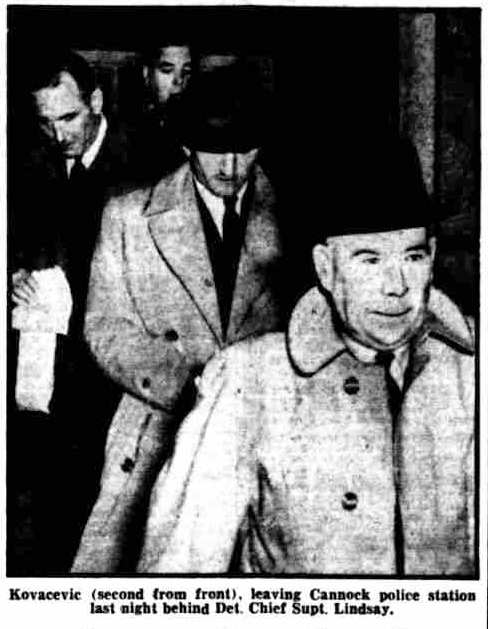
On Wednesday, 11th October, Kovacevic appeared before the magistrates at Bury, where, after hearing all of the evidence so far collected by the police, he would be formally charged with the murder of Radomir Djorovic and his trial would take place on Thursday, December 7th at the Manchester Assizes.
During his trial some eight week’s later, Kovacevic would tell the jury that he had been a member of the army of General Mihailovich, which had been fighting the Germans, whereas Djorovic was a ‘quisling’ or ‘traitor’ in Belgrade during the war and someone who had ‘sided’ with the Germans.
He would go on to tell of how his army had to take refuge in the mountains, but his father, two brothers and three sisters had been shot.
This then led to the events leading up to the death of Djorovic on the 9th October.
The post-mortem would reveal that Djorovic had sustained severe trauma that had included nine wounds to his head along with bruising around both eyes. His skull had been fractured which had resulted in his death.
His trial would enter a second day, and on Friday, 8th December, further evidence would be submitted.
Further details would emerge as to what happened on the morning of Djorovic’s death, with Kovacevic telling the jury that both men had travelled over to Edenfield to meet with a companion of Kovacevic’s – a lady by the name of Liza Seibert. At around 11.00am, they departed a bus directly outside the Horse and Jockey public house. As they made their way towards a bridge that went over the East Lancashire railway line, it had began to rain quite heavily, and after noticing a cabin by the side of the track in the nearby distance, they decided to make their way over to it.
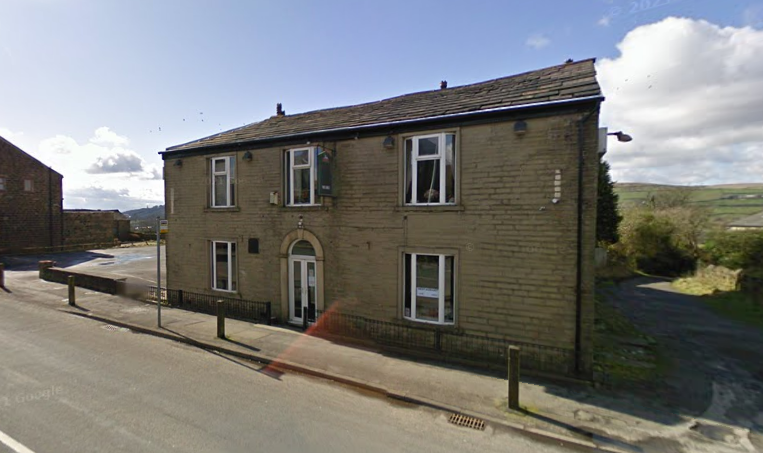
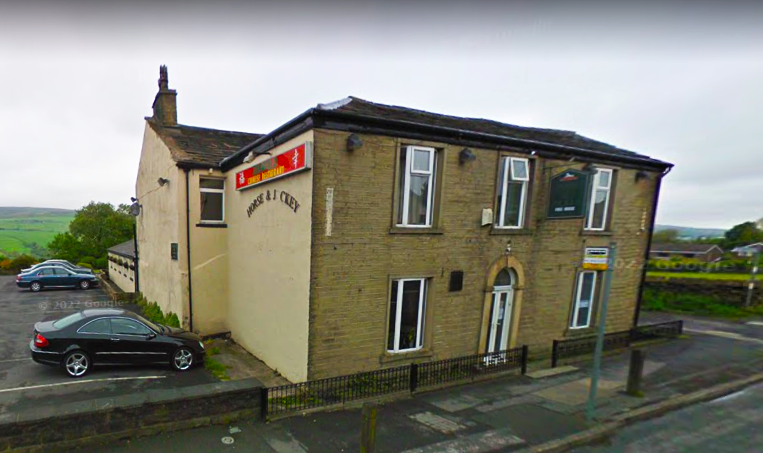
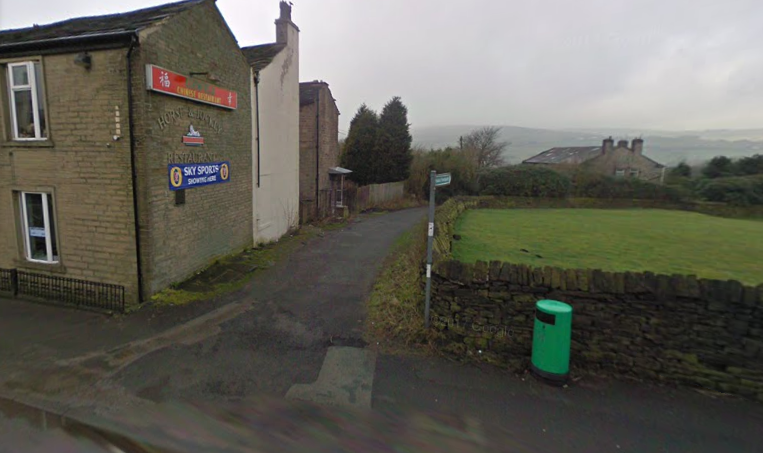
Once inside the cabin, both men began talking about the war again, with Djorovic asking Kovacevic : “Tell me who was right, you who went to the mountains or we who stayed in Serbia?”
It appears the Djorovic had taunted Kovacevic over his the deaths of his family relatives, and becoming irritated and annoyed by Djorovic’s antagonism, a fight broke out once inside the cabin.
“I ruffled his hair, got hold of his arm, and said we would have a fight,” Kovacevic would tell the jury.
When asked about the nature of the attack and how Djorovic would end up laying in a motionless state on the floor, Kovacevic explained how he noticed an axe during the fight.
“I took it and hit him twice and he fell. I was looking at him and was nearly unconscious and I said to myself : ‘My mother has lost everything and to-day she has lost me.’”
In reply to his counsel, Mr. Kenneth Burke, he said : “Yes I did it and I am very sorry, but I have to confess I did it.”
The jury would later disperse to reach their conclusion and after an absence of an hour and a half, they returned with a verdict of guilty.
Mr. Kenneth Burke, defending, had sought a verdict of manslaughter saying that Kovacevic had acted under great provocation but this went unheeded by the jury members.
Nenad Kovacevic would receive the ultimate punishment for the murder of Radomir Djorovic, that of the death penalty.
An appeal was set up and despite it receiving over 20,000 signatures, it proved to be unsuccessful.
Last minute pleas for clemency, with the Ex-King Peter of Yugoslavia reportingly having sent a telegram to the-then King asking for his help, would also fail to stop the execution.
Unfortunately for Kovacevic, the British Home Secretary had already stated that there were not sufficient grounds to justify him in recommending any interference with the due course of the law and the death penalty will go ahead.
Kovacevic, on being advised that his appeal had failed, spoke with his solicitor on the evening before his execution, arranging for his will to be written. In this, he left everything to Liza, and his final words that evening were : “Look after Liza.”
At 8.00am on Friday, 26th January – Kovacevic was hanged at Strangeways Prison, Manchester. It has been written that he did not go to the gallows without a struggle, having to be restrained and then dragged to the trapdoor. The hangman that morning was Albert Pierrepoint.
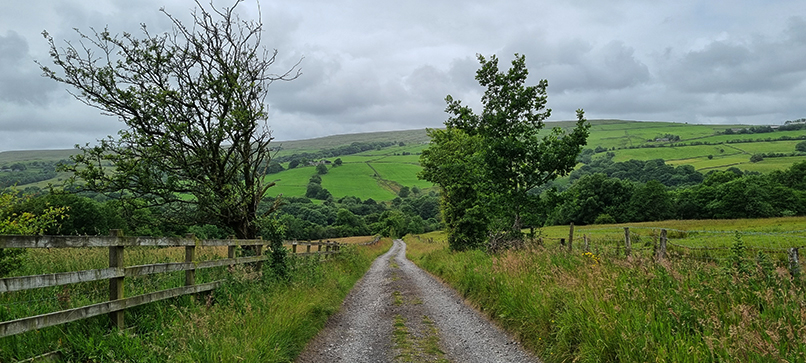
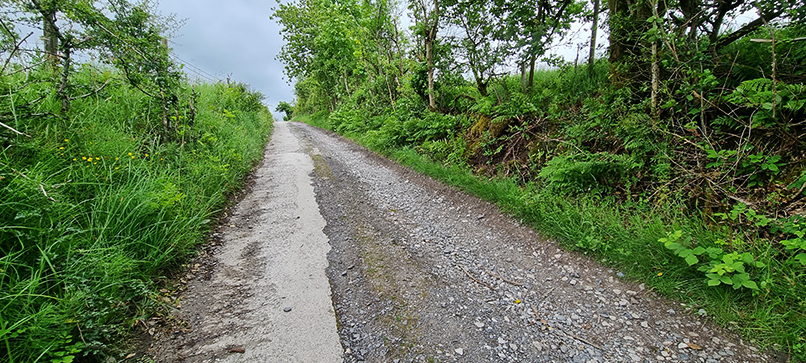
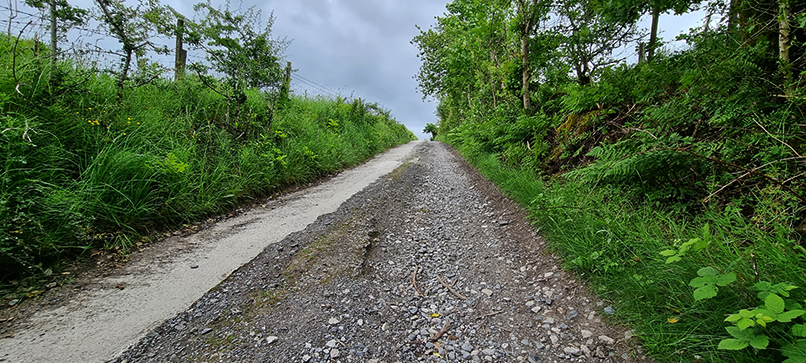

In a sad twist of fate, Kovacevic’s 75-year old mother, Mrs. Maria Kovacevic, had been expected to arrive in England just days prior to her son’s execution, with accommodation being reserved for her and a companion at the Y.M.C.A. hostel in Peter-Street, Manchester.
However, the room had remained empty throughout the week, but even up to the morning of his execution, the warden of the hostel still expected her to arrive.
Mr. Harold James, Kovacevic’s solicitor told the press : “As soon as Kovacevic’s appeal against the death sentence was dismissed the Permanent Secretary of the Yugoslav embassy wrote to me saying that no difficulty would be placed in the way of the mother’s visit to see her son in the condemned cell. Her silence suggests she is on her way.”
Six hours after Kovacevic’s execution and at around 2.30pm, Mr. James received a telephone call from Maria, but as she could not speak English and Mr. James did not understand her native language, he was unable to know what the object of her call was.
“I was asked to stand by for a call from Belgrade at 3 p.m. It came through very clearly. A woman, speaking in the Yugoslav language, mentioned the name Madame Kovacevic several times, and also my name, but I could make nothing of the message.
“The only available interpreter I could think of was in King Peter’s flat in London, so I asked the exchange to divert the call there. Ten minutes later I rang King Peter’s flat, but I was told the call never got there. There has been no further message.
“I tried to tell the woman that he execution had been carried out. I don’t know if she understood. It may have meant that Kovacevic’s wife or mother was about to start the journey to Britain to see him, not knowing he was already dead.”
An even stranger affair came to light just days after his execution when a letter arrived at Kovacevic’s solicitors office. It had been sent Nenad’s wife, Anica.
She wrote : “I am willing to leave for England at any time, but the authorities are not prepared to issue me a passport, as they have been advised by the Yugoslav Embassy in London that the permit to come to England has been granted to Mrs. Maria Kovacevic.”
The letter also intimated that Maria was too ill to make the journey, which would explain her absence from the hostel.
Mr. James, solicitor, replied, saying that her husband was hanged on January 26th, and that she had to apply to the Home Office for further information.
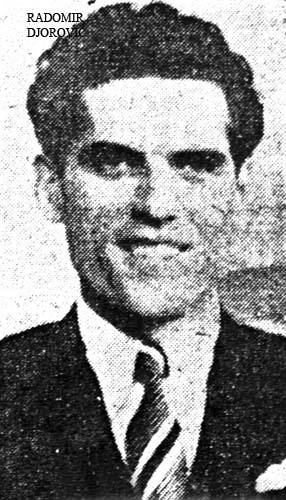
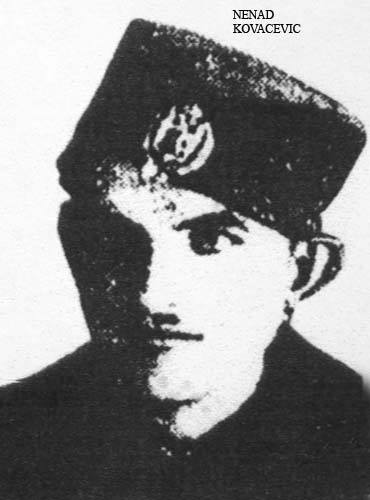
Nenad Kovacevic’s body was buried within the grounds of Strangeway’s Prison soon after his execution. It would later be exhumed, along with all other executed criminals sometime in 1991. As with the other exhumbed bodies, his would be cremated over in Blackley before his ashes would be interred within Blackley Cemetery. Two plots contain the ashes of those executed. Plot 2710 and 2711.
As for Radomir Djorovic, it is unclear as to what happened with his body. We are not sure if he was returned back to his native country to be laid to rest with his family, or he was interred somewhere here in England.
Sources used in this story;
Manchester Evening News – Monday 09 October 1950
Manchester Evening News – Tuesday 10 October 1950
Manchester Evening News – Thursday 07 December 1950
Birmingham Daily Gazette – Wednesday 11 October 1950
Manchester Evening News – Monday 22 January 1951
Weekly Dispatch (London) – Sunday 28 January 1951
Hanged at Manchester by Steve Fielding – available on Amazon
+ many more courtesy of the British Newspaper Archive – www.britishnewspaperarchive.co.uk and www.ancestry.co.uk
Please follow me on social media;
Twitter – https://twitter.com/dohpods
Instagram – www.instagram.com/dohpods
Youtube – https://www.youtube.com/c/DaysofHorrorPodcast
Music;
Casual Desire – Ugonna Onyekwe – No Copyright Music
Contact – The Tower of Light – No Copyright Music
Fading – Myuu – No Copyright Music

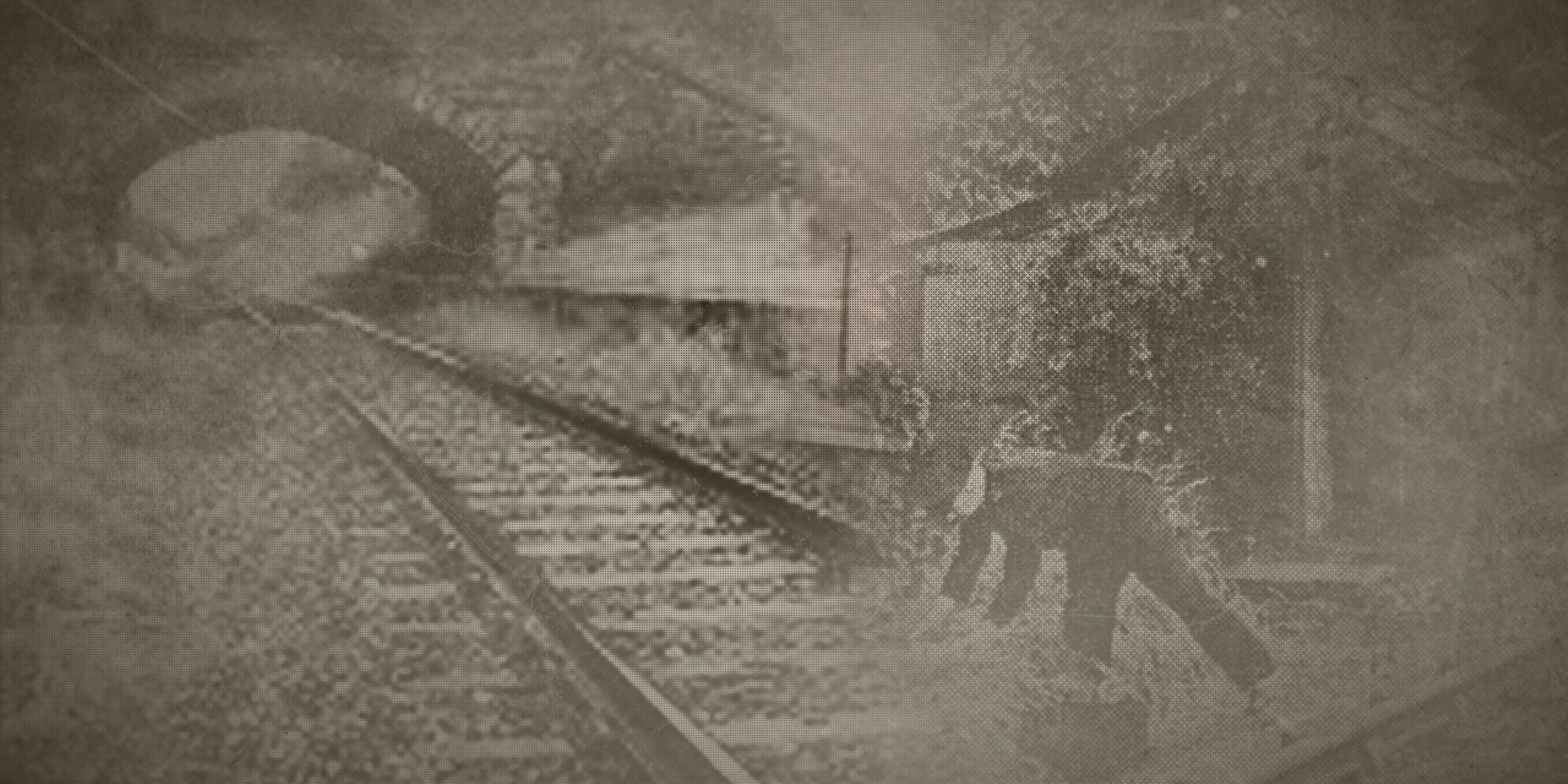
Leave a Reply